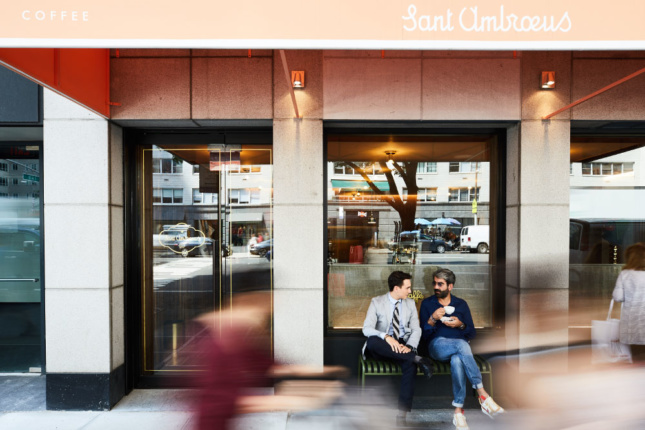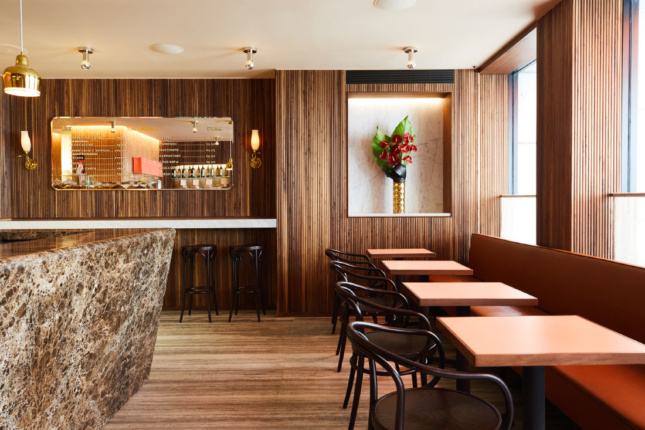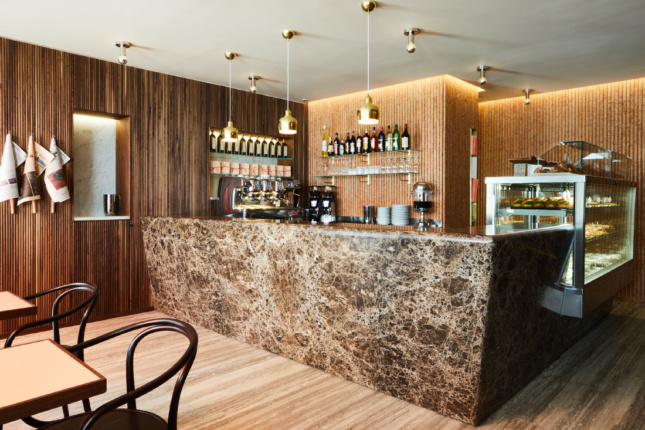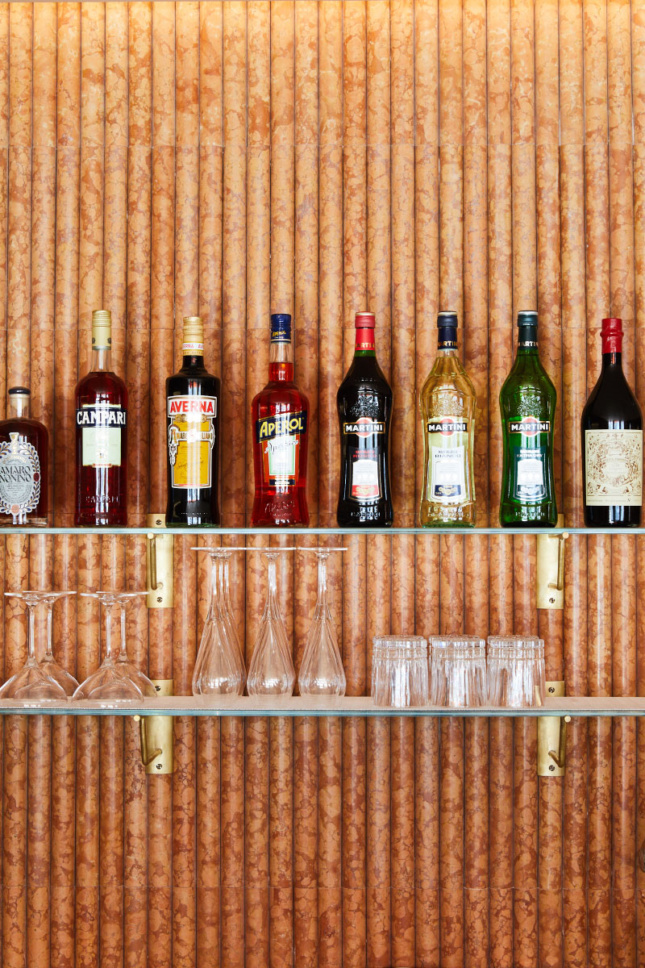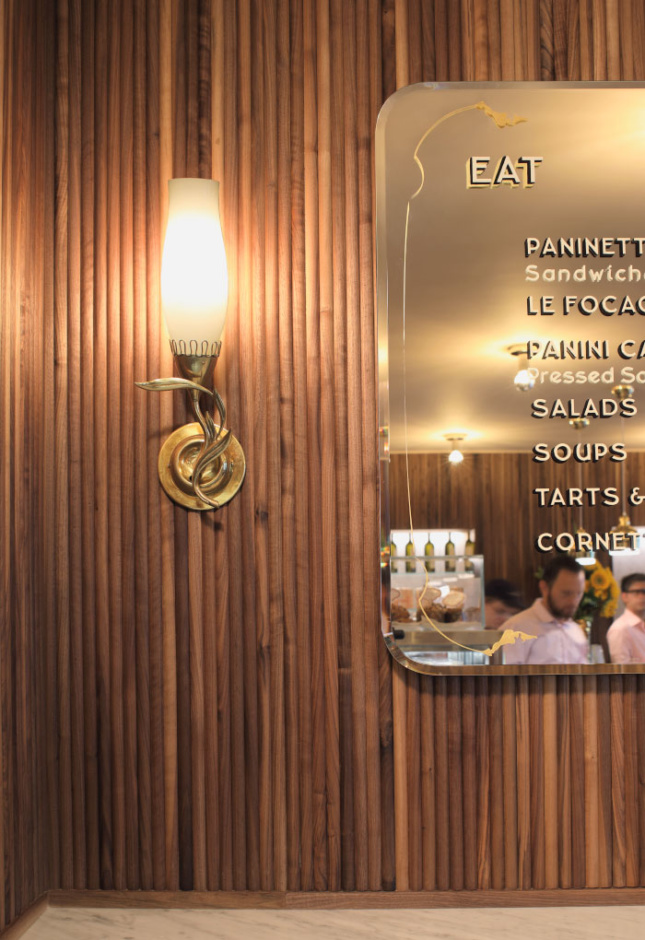Stop by the latest outpost of Sant Ambroeus for your morning coffee and you may not notice all of the design at play. But you’ll certainly feel it, as you enjoy an espresso, Italian-style, at the counter. Your leg will sink into the angle of the Dark Emperador marble slab, and suddenly you’ll feel anchored, calm.
That’s because visitors to the Upper East Side coffee shop are in the competent hands of Bonetti/Kozerski Architecture, who used mock-ups to convince their client to place the glowing pastry case at the back and allow generous room for flow.
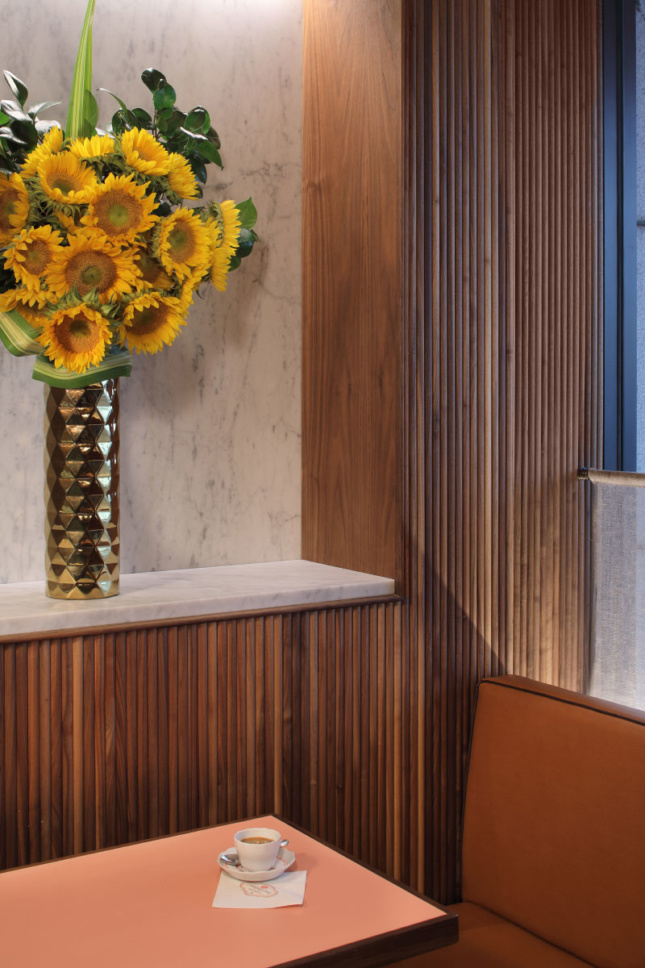
“There’s always a leap of faith from the client, but the shorter you can make it and the more you can show the reasons, the better,” said Enrico Bonetti, the project’s principal in charge, whose firm lead the renovation of the entire building, now called the Hanley.
A native of Bologna and a self-professed coffee obsessive, Bonetti looked to the brand’s heritage, “like a producer,” to create a space that would feel both fresh and within the visual language established since the first Sant Ambroeus opened in 1936.
“We adjusted what they had, fine-tuned it, and tried to bring some level of quality that you don’t see, but you feel,” Bonetti said. Every element, down to a brass niche precisely proportioned to hide the requisite box of latex gloves, was carefully considered. “You don’t find places like this in Italy,” Bonetti said, settling into a coffee-colored Thonet chair. “The level of refinement is very New York.”
Behind the counter, rounded tiles of Marmo Rosa di Verona were glued to the walls by “two very old installers” imported, like the stone, from Italy. The tiles’ shape mirrors the oiled American walnut tambour that clads the remaining walls, while their shade references Sant Ambroeus’s signature peachy-pink hue. Even the ceiling is painted with purpose, nearly imperceptibly, in Benjamin Moore’s Burlap, a neutral take on the color. While it’s unlikely anyone would notice the hue, the entire space glows warmly thanks to layered lighting with metallic-capped LED bulbs in simple ceiling-mounted Schoolhouse Electric fixtures as well as architectural cove lighting combined with a pair of vintage 1950s Paavo Tynell sconces and brass Alvar Aalto pendants.
The same care was given to details like the matte black paint that makes the tables’ legs seemingly disappear, the wood newspaper holders sourced from Germany, and even the height of the custom leather bench, which puts sitters at eye level with those across from them. “These are not things that anybody notices, but at the end, they stay with you if not properly treated.”
The team also worked with kitchen consultants Clevenger Frable Lavallee to make the space as functional for those working behind the counter as it is beautiful for those waiting in line. But, Bonetti had more than just his clients to please. “It’s mostly thinking selfishly,” the architect joked, “because I want to come back and have a really good cup of coffee.”
